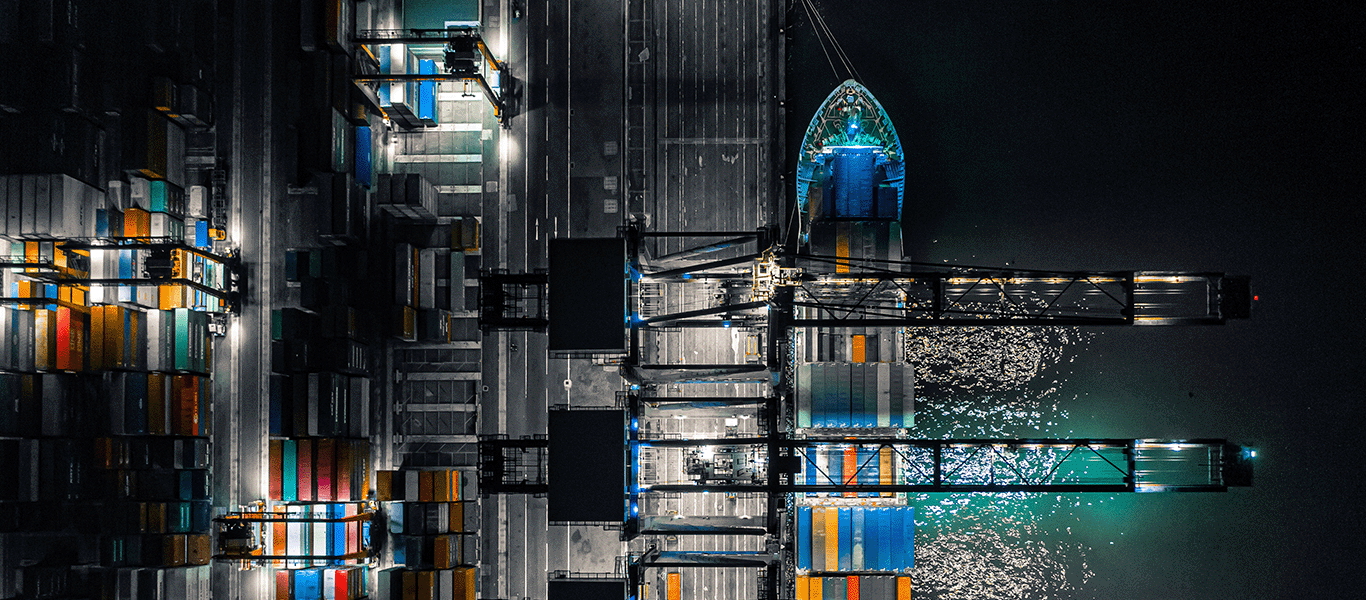
Shipping is the adhesive technology that binds global trade. It has experienced seismic changes over the past decade, with energy transition and digital technology transforming the business and setting a unique challenge for those in the maritime marketing space that have kept up with shipping’s pace of change, explains Wake Media’s MD Andy Ford.
Digitalisation is an enabler of that change with major maritime developments taking place, including regulatory, economic and technological innovation revolutionising the industry.
Major changes in maritime began increasing the pace with the introduction, in 2013, of the Energy Efficiency Design Index (EEDI) which mandates improvements in the efficiency of new vessel designs, and then the IMO’s decision in 2018 to halve carbon emissions from the maritime industry, compared to 2008 levels, by 2050.
In hindsight 2018 was the watershed moment that has driven other major technological change.
That decision was reviewed five years later, and the industry now requires a 100% reduction, or close to it, by 2050.
An early test of the industry’s ability to transition to new fuels was also introduced in 2020 with the mandating of emission control areas which required the use of either, expensive low sulphur fuels or the fitting of scrubber technology to remove sulphur from exhaust emissions.
Added to these revolutionary regulatory changes are the transition to digital technologies which has seen up to 10,000 sensors employed on vessels measuring fuel consumption, emissions, speed, wind speed, vessel loading, attitude in the water and a mind-boggling array of other data.
Digitalisation will change the way ships are designed, with the increased computer power leading to more accurate computational fluid dynamics (CFD) which has given rise to new vessel design technology and the hull design hydrodynamics that allows naval architects to tweak hull designs to squeeze efficiencies from vessels.
While the 2020 sulphur cap was an important regulation to cut poisonous SOx emissions for vessel exhausts, it was also a challenge for the industry, with some observers predicting chaos with vessel breakdowns at sea and massive costs increases.
In truth the introduction of the sulphur regulations was overshadowed by the chaos of COVID-19, which turned the maritime sector upside down, to such an extent that nobody noticed that vessel operators had quietly introduced low sulphur diesel and scrubber technology without fuss.
But the impact of the sulphur cap was to have wider implications as the levels of ambition in the decarbonisation process rapidly increased in 2023 from the initial level of 50%, set five years earlier, the sulphur regulations showed that it was possible to transition safely.
Scrubber technology, although costly, could be introduced to mitigate the emissions on existing and new vessels and manufacturers could design, develop and deploy this technology rapidly.
It was an effective testing ground for the far greater challenge of decarbonisation, which would require the retrofit of many thousands of ships and the design and building of new vessels, new technology and all new fuels.
Maersk’s 2,100 teu Laura Maersk was the first green methanol powered vessel to enter service last year, moreover, the company will be the first to convert an existing vessel to dual fuel capability, green methanol and diesel.
According to Maersk the first engine retrofit in the industry is scheduled to be conducted by the middle of this year and the Danish carrier intends to retrofit its sister vessels as they head for their special survey in 2027.
Ammonia is another expected interim fuel that will see the transition to net zero emissions and is considered by many to be a far more likely contender than methanol, given that it is cheaper and easier to produce than methanol, though there are acute safety concerns over the toxicity of the fuel.
These are the two main contenders for interim fuels for the deepsea sector of shipping with tankers, bulkers and container ships accounting for 86% of the carbon pollution from shipping.
Other contenders such as hydrogen and electricity as a fuel do not have the energy density necessary for deepsea vessels and are only considered viable for coastal ships, such as ferries and vessels operating in the offshore oil and gas industry.
Perhaps more surprising is the comeback being made by wind energy, with lightweight carbon fibre materials and computerised management systems coupled with weather, wind and current data to help drive a ship forward.
LNG, considered the fuel of the future as recently as 10 years ago, will now be subject to heavy environmental penalties due to its very high potency as a greenhouse gas (GHG). LNG remains in the atmosphere for a comparatively short period, around 20 years, but scientists say its potency as GHG is 86 times that of CO2.
As such LNG will be subject to the IMO’s market-based measures, that will see vessel operators charged for GHG emissions, eventually bringing the cost of operating vessels on polluting fuels into line with the zero and net zero emission alternatives.
Similar charges are now being levied by the EU, which introduced its carbon trading scheme, the EU ETS, in January of this year. The EU ETS will require carriers to pay for emissions retrospectively, by registering the fuel consumption of each vessel calling at or departing from EU ports and dividing the fuel usage in half, as the remaining 50% is considered to come under the jurisdiction of the destination or origin country of the vessel, while intra-European voyages are charged at 100%.
EU ETS charges will increase rapidly over the coming years with ships subject to 40% of the carbon charges in the first year, rising to 70% in 2025 and 100% by January 2026. Moreover, NOx and methane emissions will also be regulated from 2026.
In complex legislation the EU ETS allows 79 million EU Allowances for shipping, which can be purchased as payment for carbon emissions measured by the Maritime Reporting and Verification system. EUA’s are currently trading at around €63/allowance. The number of issued allowances will reduce 4.2% annually, penalties of €100/tonne of carbon emitted beyond the EUAs will also be imposed.
The EU’s Fit for 55 package of regulations, which includes the EU ETS, also mandates the FuelEU regulation which requires operators to reduce the GHG intensity of the fuels used, starting in 2025 a with a reduction of 2% the reduction will steadily increase to 80% by 2050. FuelEU also includes unspecified penalties for non-compliance.
Penalties will be based on the amount and cost of renewable and low-carbon fuels that the ships should have used to meet the regulatory requirements.
Regulations are driving technological innovation that will drive down GHG emissions from newbuilds, but there also remains a requirement to deliver sizeable reductions from the existing fleet.
Slow steaming has seen emissions savings from individual ships, but it is less clear how this would translate to an industry wide decreases.
Carbon capture and storage (CCS) is also being investigated as an increasingly viable option to reduce GHG emissions.
In another innovation to cut emissions the first fully automated ship has gone into service. The 80m, 120 teu, electric powered container vessel will operate from Yara’s Porsgrunn plant to ports in Brevik and Larvik, replacing 40,000 truck journeys per year.
With an all-electric loading system, the ship is on track to be the first fully autonomous ship operating entirely in Norwegian waters. A system that has been made possible by the advances in digital communications.
Data is increasingly being used to cut emissions too, whether through tracking emissions, digital systems to route vessels away from storms and rough weather systems or to optimise engine and vessel trim settings.
In addition, new systems to regulate a vessel’s time of arrival, will see ships arrive at a port at its given slot for cargo handling, rather than being forced to idle for many hours outside of a terminal waiting to be serviced.
Digital communications have advanced exponentially, and this too will aid the decarbonisation drive, as well as the tracking of cargo and monitoring sensitive cargoes such as food or pharmaceuticals.
Increasingly vessels are being monitored for performance with key systems also being constantly reviewed to maintain services and to predict any failures, allowing for proactive maintenance rather than reactive, and very costly, repairs.
Over the last 10 years Wake Media Group has followed the trends of the maritime sector and understood the trajectory of the industry. It has also been on its own digital journey seeing its own radical transition since Wake was first founded by the late Steve Parks.
The digital age has ushered in a new world of advertising and promotional opportunities, including multi-channel advertising campaigns.
With the importance of measuring ROI, links to websites add depth to the information explosion seen in the media while Wake has developed its own Campaign Performance Dashboard and technology stack that allows its customers to monitor the effectiveness of its promotional operation and to review and adapt campaigns as necessary.
These campaigns are supported through events, such as webinars (which has seen a big increase since the pandemic) and live conferences, as well as a team of event specialists and industry focused journalists who can provide technical, tailored copy for Wake clientele.
Wake Media is a thoroughly modern marketing and communications agency that prides itself on its customer service, but also on its up-to-date employment culture that puts people first. The company promotes a courageous approach to marketing, focusing on creativity as well as being agile when adaptation is required, becoming an extension of a client’s marketing team working in unison in a mutually beneficial way.
In developing that ability to evolve with the times Wake has also seen the benefits of training for its staff and for others in the marketing space. Its Marketing In Maritime event at last year’s London International Shipping week brought together marketing and technology professionals that offered real insights for those in the business.
Given the seriousness of the business it goes without saying that Wake Media remains a serious player, the company is bold, and it has woken up to its responsibilities, without forgetting that life has a lighter side that lubricates the wheels of work.
👉 To be alerted to future articles such as this please subscribe here.
